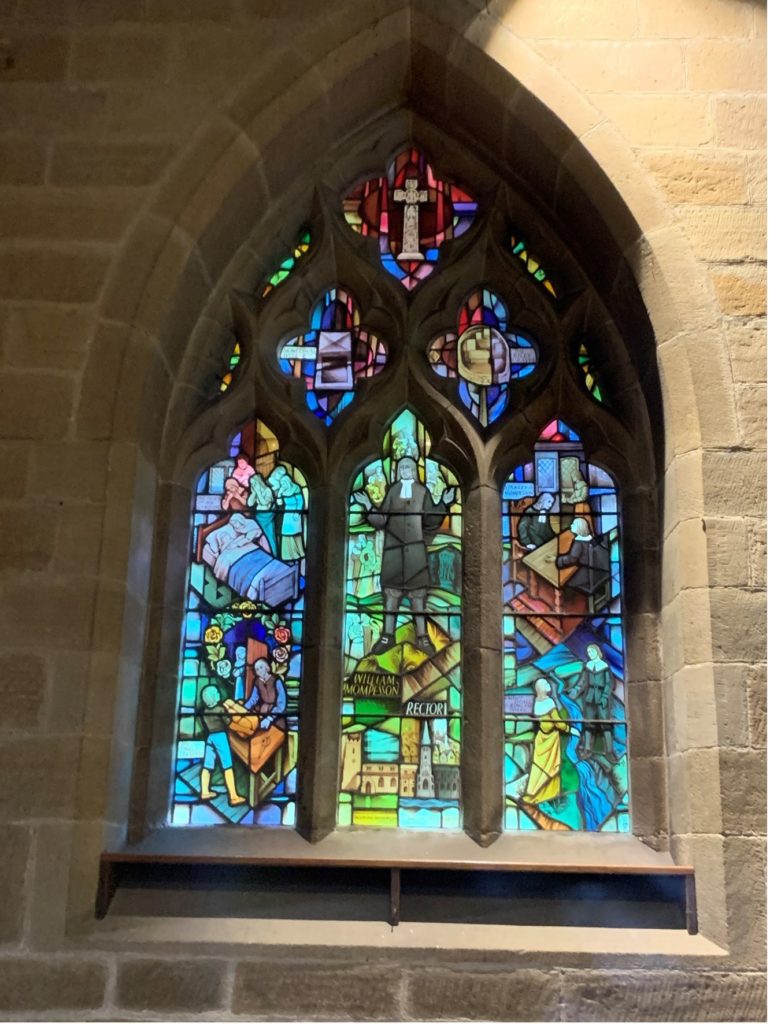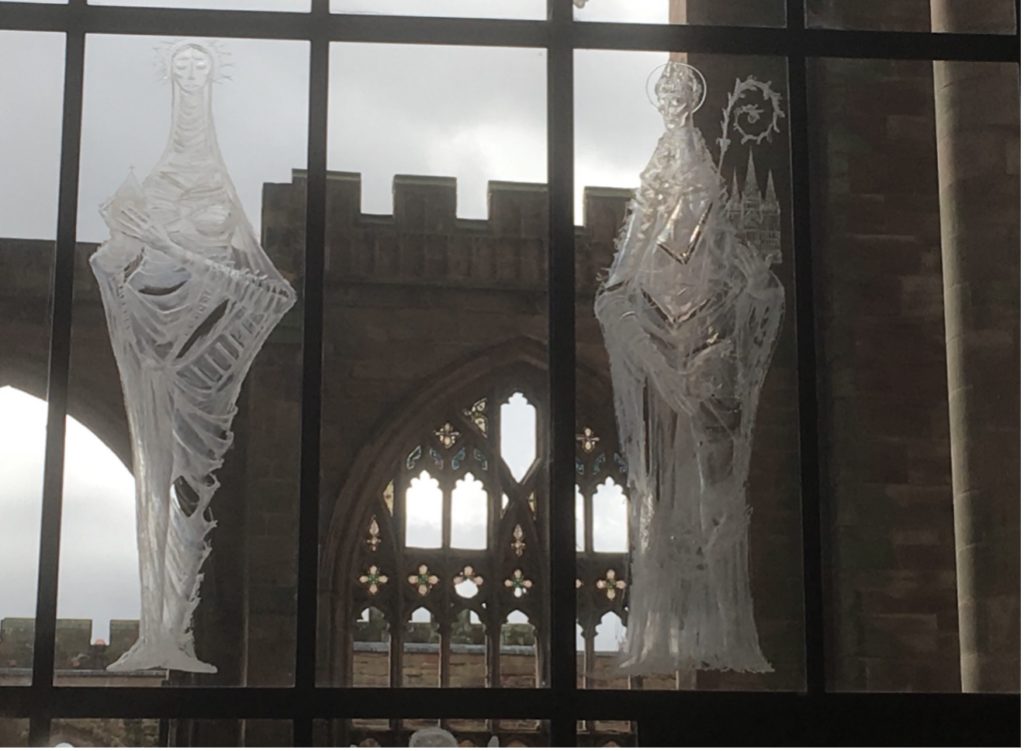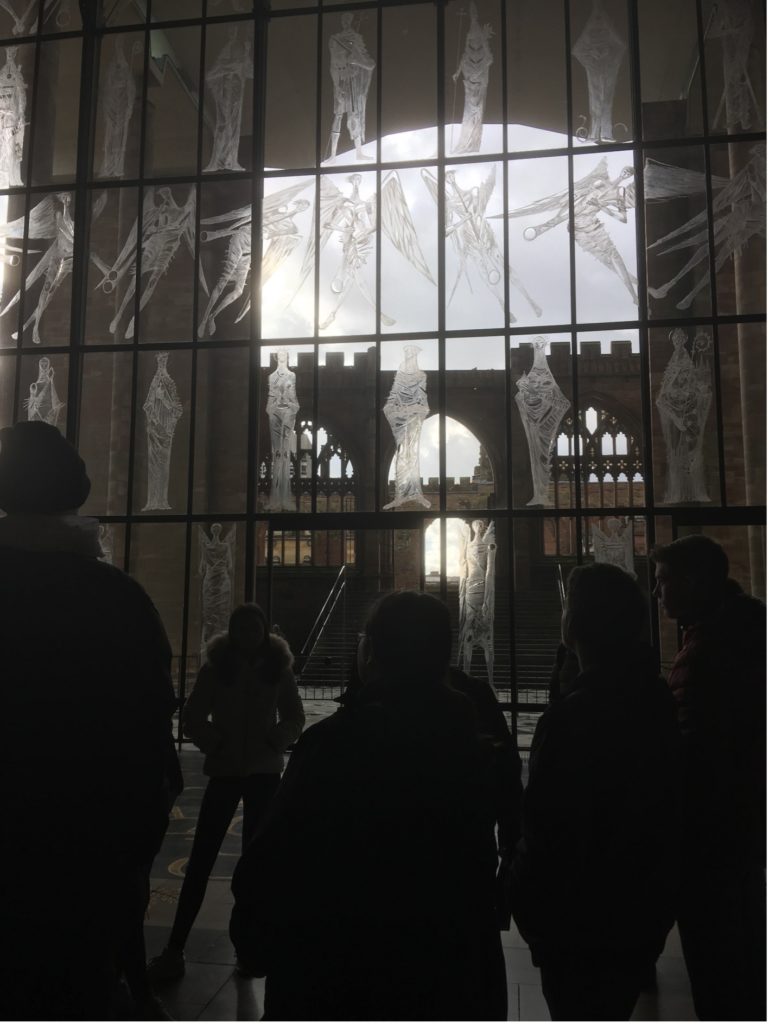Ways of Knowing in the Past Part 3
03 January, 2023, Jennifer Jenkins
Theological Art: Stained Glass Windows
Stained glass windows have been part of church architecture from Medieval times. The technique originates in 10th Century Assyria and was used extensively by ancient Egyptian and Roman artists and architects. Mosques and synagogues make use of stained glass with geometric or decorative motifs rather than the human figures found in Christian churches.
The oldest glass remaining in situ is found in Canterbury Cathedral, where it was first set in place in 1184. By the 15th century, stained glass windows had developed in complexity. York Minster provides a good example in the East window. Designed by John Thornton of Coventry, the window depicts the beginning and end of all things from the book of Genesis to the book of Revelation, essentially capturing what was known in the Middle Ages as the ‘Apocalypse’. By the 19th century this art form was finding its way into non- religious spaces, through the work of William Morris, Charles Rennie Macintosh and others. In the 20th century, stained glass took on a modern, abstract perspective within sacred space.
A good example of abstract, Christian stained glass is the Piper baptistery window in Coventry Cathedral, which symbolises baptism through light. The vibrant colours stream around the Cathedral’s font, a scallop shell carved from rock outside Bethlehem.
What was the early purpose of stained glass windows? One medieval Abbot of Saint Denis, in the northern suburbs of Paris, used the wealth of the abbey to create lavish stained glass windows, believing light to be a manifestation of God himself. He wanted Parisians to be bathed in God’s light. In the Old Testament light represents good and is symbolic of God’s protection.
Stained glass windows in the Medieval era provided education through depicting biblical stories to an illiterate population. Educating the masses in religion in the medieval ages was crucial because the church was the highest authority in society, and in order to achieve salvation one must follow the word of God; a significant challenge for those who could not read. Scholars speculate that the stained glass windows may have had more profound impact on the Medieval laity than the sermons told by clergy. The depictions in glass were, after all, their only means of unmediated theological thinking.
Over time, the opulence of stained glass began to represent the wealth of church patrons, and the complex relationship of religion and power was exemplified in increasingly ornate windows. Stained glass windows became a powerful medium to communicate a message of both spiritual and temporal authority. Windows often featured monarchs alongside saints to reinforce the idea of divine kingship. Patrons who had paid for the production of the windows were also featured, alongside their family coat of arms.
A modern window is the Plague Window in the church of St Lawrence in Eyam, Derbyshire. Designed by Alfred Fisher and installed in 1985, it tells the story of the plague’s arrival in 1665 and village’s response. Reverends William Mompesson and Thomas Stanley convinced their fellow villagers that quarantining was the most Christian course of action, inspired by Jesus words in John 15: ‘greater love has no man….’. Their actions did spare the towns and villages surrounding Eyam, saving thousands of lives, but at a great cost to themselves; three quarters of the village died. Today, their sacrifice is memorialised in the window of the village church:
Stained windows of antiquity frequently depicted saints whose relics were interred in the church. In the fourteenth century, stained glass windows evolved to be much more like paintings, changing the narrative style of stained glass windows. Whereas prior to the thirteenth century, windows often showed dozens of scenes from the life of a particular saint or martyr, the fourteenth century saw windows concentrating more on a single important event of the saint of martyr’s life in each window, demonstrated on a larger scale and telling the life of the saint over a large stretch of the church’s external walls.
During the seventeenth century English Civil War (1642-43), Puritans smashed stained glass windows, considering them to be idolatrous. Likewise, during the French Revolution, windows were also smashed or removed because of their symbolism of the authoritarian power of both the monarchy and the Catholic Church. Protestants in England rejected ornate decoration in church. By 1640, stained glass windows were rare. The English Parliament decreed that all images of the Virgin Mary and the Trinity be removed from churches, resulting in some vandalism of medieval windows.
When one of the Angel windows was broken by an act of vandalism in 2020, Coventry City of Culture established a completion titled ‘Broken Angel’ which led to a series of temporary installations: https://coventry2021.co.uk/what-s- on/broken-angel/
Sacred windows are still of great value and importance in our own times it seems.
So, next time you take pupils on a trip to a church for RE, it may be worth researching the stained glass windows there so that you are better positioned to explore the theological and historical-social significance with pupils.



